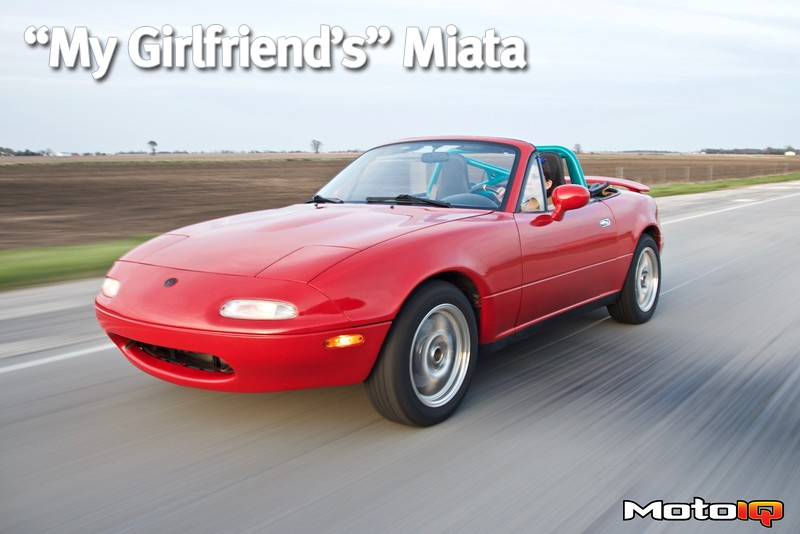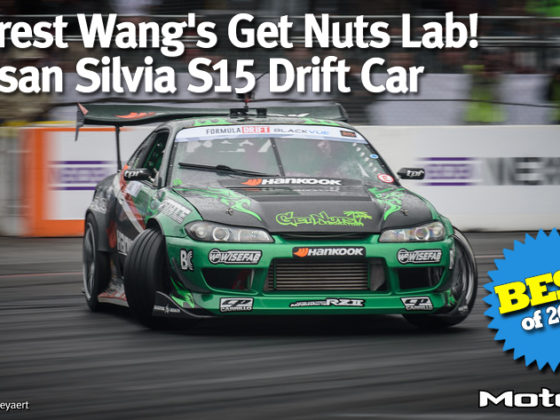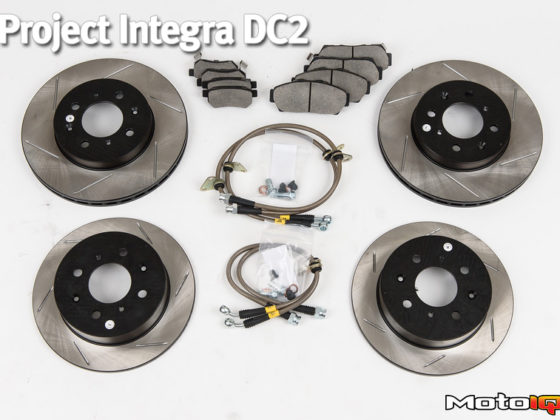
“My Girlfriend's” Miata: Part 4 – Brake Upgrade with Good-Win-Racing and DBA USA
We’re doing it people. The impossible is becoming possible. We’re taking a car that I don’t own or insure and slowly turning it into a track vehicle that is someone else’s day-to-day responsibility. That being said, in order to keep up this ruse, I can’t screw up its daily manners too much or the girlfriend might catch on to my plan. This was a big concern for me when I was planning one of the most important systems for the track, the brakes!
So dear reader, you might be asking, “Dan, why were you so concerned about the brakes?” Well my dear friend, there’s a lot that goes through my mind when it comes to brakes, but one thing sticks out above the rest. Did you know that to slow your car down you are literally converting kinetic energy into heat? Heat is critical to take into account when dealing with a track car that needs to have daily manners.
Early Miatas have the smallest brakes, in the known universe, of any braking system ever invented. Your little sister’s pink Huffy with the wicker basket has larger brakes. From the factory, the Miata has 9.3 inch ventilated discs up front and 9.1 inch solid discs in the rear. For street usage, the Miata can get away with this for two reasons. First, because the chassis is constructed of 90% hopes and dreams, the curb weight, like its torsional rigidity, is pretty insignificant. The only thing less significant is the stock horsepower the 1.6L engine puts out. With no mass and no horsepower, you’re not going to get much kinetic energy that needs to be converted to heat, so dinky brakes work just fine.
On the track, it’s a slightly different story. The dinky brakes can work, but if you have a series of turns and/or a long enough straight to allow the Miata to actually get some speed, the tiny brakes start to heat up faster than the surrounding air can cool them. This can cause a host of problems. If the calipers get too hot, the brake fluid can boil, causing the brake pedal to feel mushy at best or at worst, you can lose brakes completely. You can also roast dust boots and/or caliper piston seals. At best this can be a mess, at worst you can pump your brake fluid out through your toasted seals. Running smaller brakes also elevates the operating temperature of the brake pads. When street pads get too hot, they can smear, leave deposits, wear extremely quick and even fail. Of course there are brake pads that can operate at elevated temperatures, but they generally suck on the street. At low temperatures, the pads can wear unevenly, be noisy, dusty or, more importantly, non functional on your drive to Starbucks. No pad exists, that I am aware of, that works great on both the street and on the track without significant compromises. Of course, I could always drive to the track on a street compound, take off the wheels, swap to a more aggressive compound for track use, then swap back when I need to drive on the street, but being as lazy as I am, that’s not about to happen. Naps aren’t going to take themselves and my baby soft skin doesn’t take kindly to manual labor.
With this all in mind, I knew what I needed. Oversized brakes with excellent cooling properties. This would allow me to run street oriented brake pads for daily driver use, while also being able to run them on track without overheating the compound. It would also be great if these magical brakes fit under 15” wheels and were modestly priced. Turns out, Good-Win-Racing was reading my mind years in advance and had exactly what I was looking for. Topping off that good news was that their system used rotors from Disc Brake Australia to make it happen. This made me feel warm and fuzzy inside as we have experience with DBA 5000 series rotors on the Professional Awesome Evo. DBA rotors work perfectly on a 3000lb, 700hp rocketship, so the girlfriend's 2000lb, 90hp (hamster powered) rollerskate should be a piece of cake for them!
 Up front, DBA 2-piece 5000 series brake rotors are used. DBA uses fixed aluminum hats mounted to specifically forumulated, XG-150 cast iron rotor rings. The high carbon alloyed iron is heat treated with a process DBA calls TSP, Thermal Stability Profiling. The goal is to increase the longevity of the rotors, resist deformation and increase heat resistance. Long story short, we've used 5000 series rotors for years on the Professional Awesome Time Attack Evo without ever seeing excessive wear or having cracks. 10/10 would recommend for everyone to use on any vehicle that carries occupants they value.
Up front, DBA 2-piece 5000 series brake rotors are used. DBA uses fixed aluminum hats mounted to specifically forumulated, XG-150 cast iron rotor rings. The high carbon alloyed iron is heat treated with a process DBA calls TSP, Thermal Stability Profiling. The goal is to increase the longevity of the rotors, resist deformation and increase heat resistance. Long story short, we've used 5000 series rotors for years on the Professional Awesome Time Attack Evo without ever seeing excessive wear or having cracks. 10/10 would recommend for everyone to use on any vehicle that carries occupants they value. Each rotor is mill balanced and receives a anti-corrosion coating. The front discs also have the patented Kangaroo Paw ventilation system for greater strength, surface area and heat dissipation.
Each rotor is mill balanced and receives a anti-corrosion coating. The front discs also have the patented Kangaroo Paw ventilation system for greater strength, surface area and heat dissipation. In the rear the rotor has the same 2-piece design, but utilizes a solid rotor instead of the ventilated disc. Not as much heat is generated at the rear of the car and for a vehicle with the size and power of the Miata, a solid disc cuts down on weight.
In the rear the rotor has the same 2-piece design, but utilizes a solid rotor instead of the ventilated disc. Not as much heat is generated at the rear of the car and for a vehicle with the size and power of the Miata, a solid disc cuts down on weight.Good-Win-Racing has been designing brake kits for Miatas for over a decade and their Version 4 big brake kit is the culmination of all the knowledge gained over that time. The kit consists of the aforementioned DBA 5000 series rotors. One of the cool things about the rotors in this is is that they are 2-piece front and rear, with aluminum center hats to save weight. They measure at 11” for the ventilated front discs and 10.75” for the solid rear discs. The rotors feature “Tri-Symmetrical” curved slots to offer quieter performance, improved pedal feel and the ability to be used on either the right or left hand side of the vehicle. From our time attack experience, these rotors last forever, wear beautifully and we’ve never had an issue on or off track since switching to them.
 Up front, the stock calipers are replaced with Wilwood Dynalite calipers. These are 4-piston and feature forged bodies with internal passages for brake fluid to pass through. No crossover tubes to leak here. Also featured are bleed screws on all four corners, allowing the caliper to be used on either the left or right side, front or back of the rotor, making it a perfect caliper to adapt to nearly any install.
Up front, the stock calipers are replaced with Wilwood Dynalite calipers. These are 4-piston and feature forged bodies with internal passages for brake fluid to pass through. No crossover tubes to leak here. Also featured are bleed screws on all four corners, allowing the caliper to be used on either the left or right side, front or back of the rotor, making it a perfect caliper to adapt to nearly any install.



